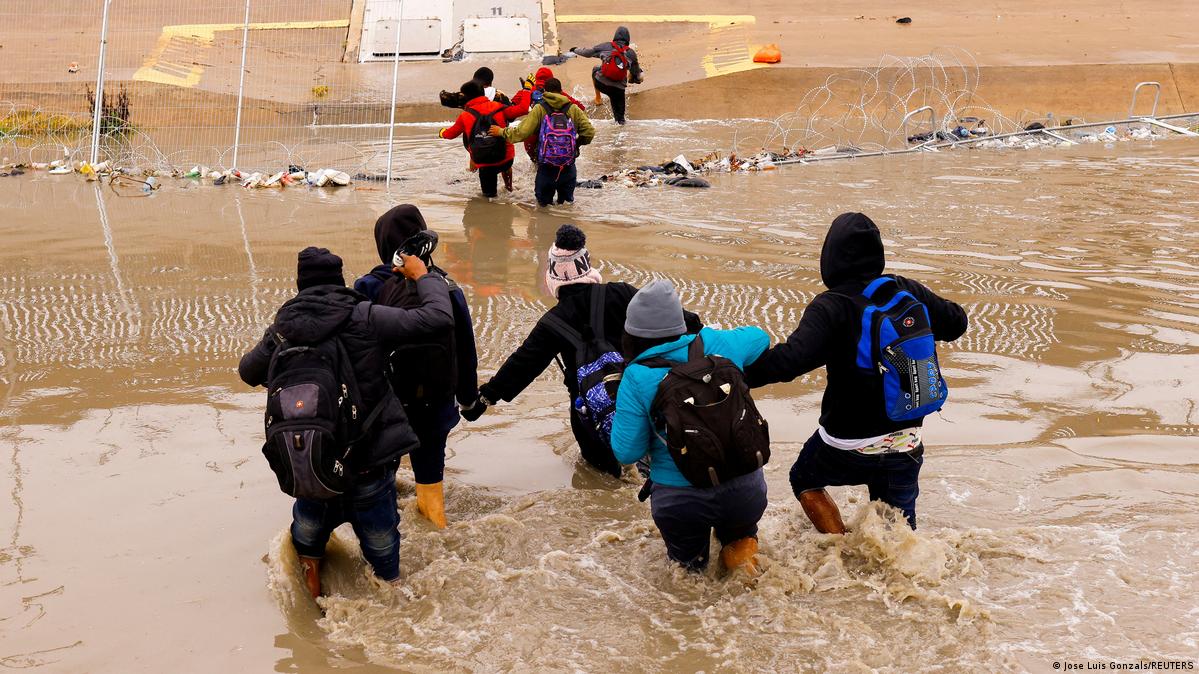‘It’s Like a Graveyard’: Record Numbers of Migrants Are Dying at the U.S. Border; US-Mexico Border: Painful Search for Missing Migrants
‘It’s Like a Graveyard’: Record Numbers of Migrants Are Dying at the U.S. Border:
More men, women and children are trying to navigate dangerous waters and isolated terrain to evade authorities
Local officials keep a refrigerated truck to hold the bodies of migrants who drown in the currents of the Rio Grande while trying to cross the border into the U.S.
Across the river, families having picnics or walking along the waterfront promenade of Piedras Negras, Mexico, say they sometimes see bodies floating by or bobbing among the reeds under a bridge. “We had times when we received four or five bodies a week,” said Hugo González, owner of Funerarias González in Piedras Negras. “At one point, there were a lot of corpses and there was nowhere to put them. We just didn’t have enough refrigerators at the funeral home.”
A spike in deaths along the most dangerous stretches of the U.S.-Mexico border reflects the escalating number of migrants seeking to cross into the U.S. from troubled home countries. At the same time, U.S. immigration policies are allowing fewer of them legal entry. Many migrants have turned to human smugglers and WhatsApp messages to help them navigate more lightly patrolled—and treacherous—sections of the border to enter illegally, U.S. officials said.
The bodies of more than 890 migrants, a record number, were recovered by U.S. authorities along the border in the 2022 fiscal year that ended Sept. 30, according to the Biden administration, a 58% increase over 2021. They drowned in fast-moving sections of the Rio Grande or, after successfully crossing, died falling from cliffs along mountain passes or from dehydration while lost, said U.S. border agents and police who recover the bodies. Hundreds more were reported missing. In July, 53 migrants were found dead inside the back of a sweltering tractor trailer found parked in San Antonio. U.S. and Mexican authorities estimate that dozens also died last year on the Mexico side of the border or were lost at sea.
U.S. Border Patrol agents made a record 2.2 million arrests along the 1,958-mile border in the 2022 fiscal year, up from 1.65 million arrests in 2021. In the 245-mile section of the border that federal authorities identify as the Del Rio Sector in Texas, which includes Eagle Pass, there were 481,000 apprehensions in fiscal 2022, an 85% increase over the previous year. Many of the arrests were in Eagle Pass’s Maverick County, population 58,000.
The Del Rio Sector is one of the most perilous places to cross the Rio Grande. Currents below the surface are strong enough to sweep away logs, cattle and people. Even experienced rescuers face risks in this stretch of the river, which claimed the lives of as many as 250 migrants last year, U.S. and Mexican officials said. —>READ MORE HERE
US-Mexico border: Painful search for missing migrants:
Thousands of undocumented migrants cross the US-Mexico border every day, but many get lost in the vast Texas ranchlands and perish. Several NGOs are helping to look for them, trying to give families a sense of closure.
It has been six months and eight days since Jose Anton went missing. The last time his family spoke with him was August 2022, just before he attempted to cross the US-Mexico border.
Witnesses said the 27-year-old tried to enter US territory through the Mexican border city of Reynosa. He wasn’t carrying his Venezuelan ID with him, nor did he have any tattoos or body marks that could help authorities or local groups identify his remains.
Anton’s case isn’t isolated, but rather a tiny part of a continental tragedy. The International Organization for Migration estimates that the border with Mexico has seen over 4,000 deaths since 2014, but this figure is likely higher because many, like Anton, are still missing.
In January alone, the South Texas Human Rights Center documented 65 missing people. Every day, they receive calls from relatives based in other US cities or in Latin America asking for a loved one that crossed the border with the help of a smuggler and went missing.
Based in Brooks County, this small NGO fights for the rights of the undocumented migrants in Texas, whether they’re dead or alive, and the families desperately looking for them.
“South Texas is a burial ground for many migrants,” said Eduardo “Eddie” Canales, the NGO’s founder. This is especially true for Brooks, the county with one of the highest death tolls for migrants in all of Texas. Since 2009, it has recovered the bodies of more than 920 people. —>READ MORE HERE







Comments are closed.